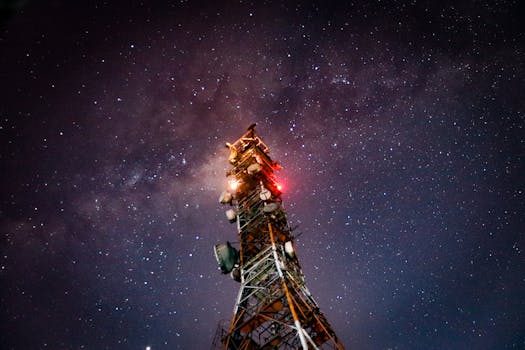
From Space to Screens: The Role of Satellite Technology in Modern Communication
Satellite Technology
Satellite technology has come a long way since the launch of the first artificial satellite, Sputnik, in 1957. Today, satellites play a vital role in modern communication, enabling global connectivity and transforming the way we live, work, and interact with each other. Satellite technology has made it possible to transmit data, voice, and video signals across the globe, connecting people and devices in even the most remote areas.
The use of satellite technology in modern communication has numerous benefits, including increased accessibility, improved reliability, and enhanced security. Satellites can provide internet connectivity to areas where traditional infrastructure is lacking, making it possible for people to access information, communicate with others, and participate in the global economy. Additionally, satellite technology can provide backup connectivity during natural disasters or network outages, ensuring that critical communications are maintained.
The Impact of Satellite Technology on Modern Communication
The impact of satellite technology on modern communication has been profound. Satellites have enabled the creation of global networks, connecting people and devices across the world. This has facilitated international trade, commerce, and cultural exchange, breaking down geographical barriers and creating new opportunities for economic growth and development. Satellite technology has also enabled the development of new services and applications, such as satellite navigation, remote sensing, and earth observation.
Furthermore, satellite technology has played a critical role in the development of modern telecommunications, enabling the transmission of data, voice, and video signals across the globe. Satellites have made it possible to establish communications networks in areas where traditional infrastructure is lacking, providing connectivity to remote and underserved communities. This has helped to bridge the digital divide, promoting social and economic development in these areas.
Applications of Satellite Technology in Modern Communication
Satellite technology has a wide range of applications in modern communication, including satellite broadband, satellite navigation, and remote sensing. Satellite broadband provides high-speed internet connectivity to areas where traditional infrastructure is lacking, enabling people to access information, communicate with others, and participate in the global economy. Satellite navigation systems, such as GPS, provide location information and timing signals, enabling users to determine their exact position and velocity.
Remote sensing involves the use of satellites to collect data about the Earth’s surface, including imagery, temperature, and atmospheric conditions. This data can be used for a variety of applications, including weather forecasting, crop monitoring, and disaster response. Additionally, satellite technology can be used for earth observation, providing valuable insights into the Earth’s climate, geology, and natural resources.
Conclusion
In conclusion, satellite technology plays a vital role in modern communication, enabling global connectivity and transforming the way we live, work, and interact with each other. The use of satellite technology has numerous benefits, including increased accessibility, improved reliability, and enhanced security. As satellite technology continues to evolve, we can expect to see new and innovative applications in areas such as satellite broadband, satellite navigation, and remote sensing.